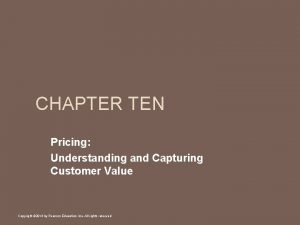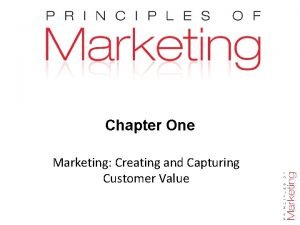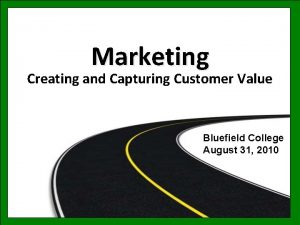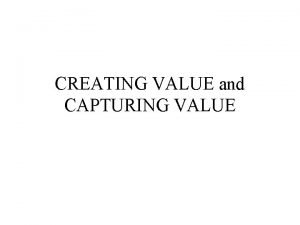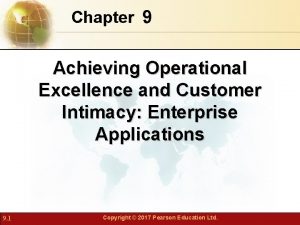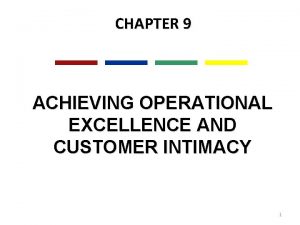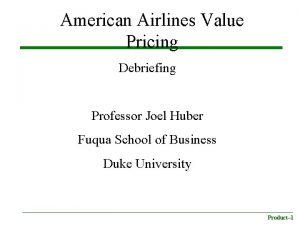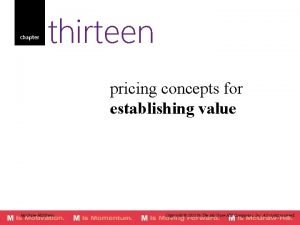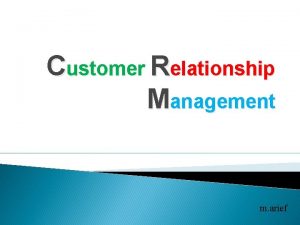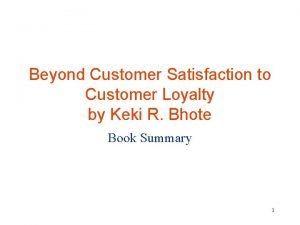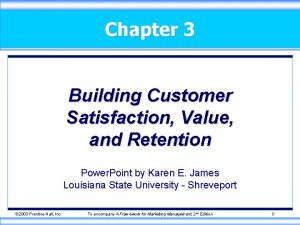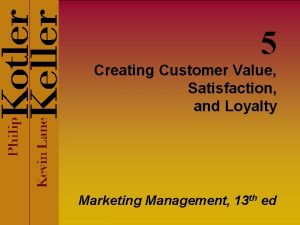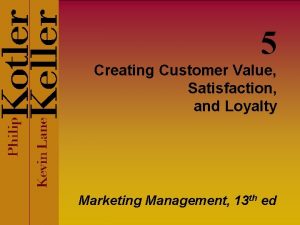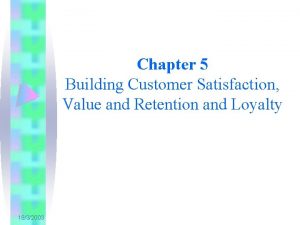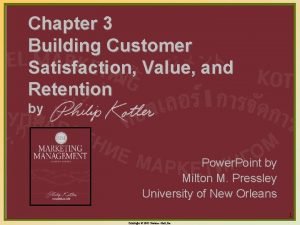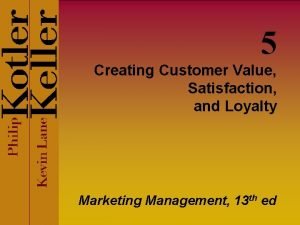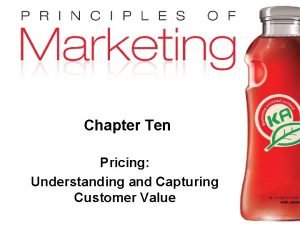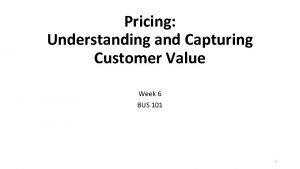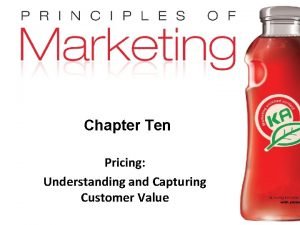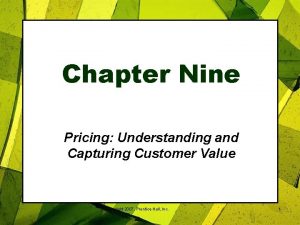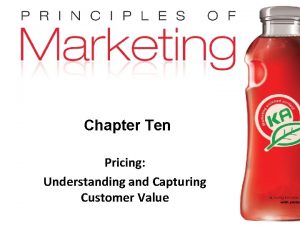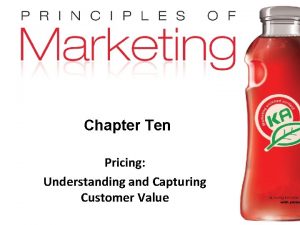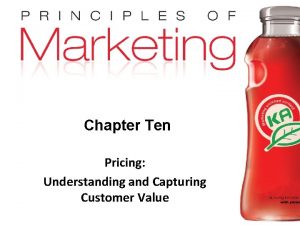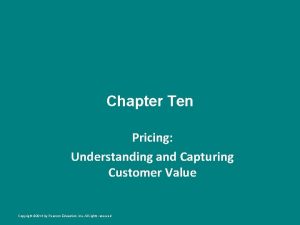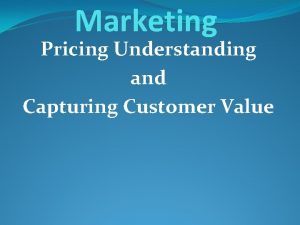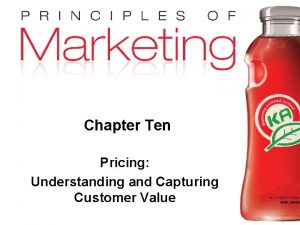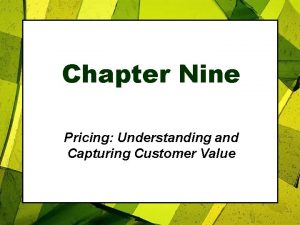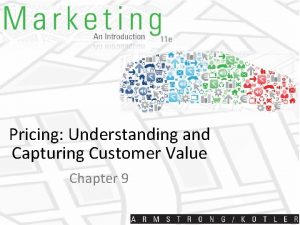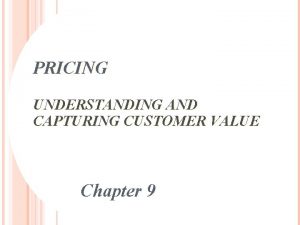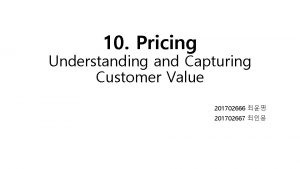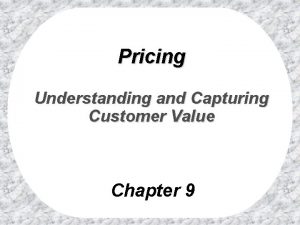Pricing Understanding and Capturing Customer Value Bluefield College

Pricing Understanding and Capturing Customer Value Bluefield College October 21, 2010

Product Life Cycle

Introduction Stage of PLC § § § § Sales: Low Costs: High cost per customer Profits: Negative or low Customers: Innovators Competitors: Few Marketing objective: Create product awareness and trial. Marketing strategies: – – Product: Offer a basic product. Price: Use cost-plus pricing. Distribution: Build selective distribution. Advertising: Build product awareness among early adopters and dealers. – Promotion: Use heavy promotion to entice product trial.

Growth Stage of PLC § § § § Sales: Rapidly rising Costs: Average cost per customer Profits: Rising profits Customers: Early adopters Competitors: Growing number Marketing objective: Maximize market share. Marketing strategies: – – – Product: Offer product extensions, service, warranty. Price: Price to penetrate the market. Distribution: Build intensive distribution. Advertising: Build awareness and interest in the mass market. Promotion: Reduce to take advantage of heavy consumer demand.

Maturity Stage of PLC § § § Sales: Peak sales Costs: Low cost per customer Profits: High profits Customers: Middle majority Competitors: Stable number beginning to decline Marketing objective: Maximize profits while defending market share. § Marketing strategies: – – – Product: Diversify brand models. Price: Match or best competitors. Distribution: Build more intensive distribution. Advertising: Stress brand differences and benefits. Promotion: Increase to encourage brand switching.

Maturity Stage of the PLC § Modifying the market: – Increase the consumption of the current product. – How? • Look for new users and market segments. • Reposition the brand to appeal to larger or faster-growing segment. § Modifying the product: – Changing characteristics such as quality, features, or style – How? • Improve durability, reliability, speed, taste. • Improve styling and attractiveness or add new features § Modifying the marketing mix: – Improving sales by changing one or more marketing mix elements. – How? • Cut prices. • Launch a better ad campaign and move into new market channels.

Decline Stage of PLC § § § Sales: Declining sales Costs: Low cost per customer Profits: Declining profits Customers: Laggards Competition: Declining number Marketing objective: Reduce expenditures and milk the brand. § Marketing strategies: – – – Product: Phase out weak items. Price: Cut price. Distribution: Go selective—phase out unprofitable outlets. Advertising: Reduce to level needed to retain hard-core loyals. Promotion: Reduce to minimal level.

What Is a Price? § Narrowly defined, price is the amount of money charged for a product or service. § Broadly defined, price is the sum of all of the values that consumers give up in order to gain the benefits of using the product or service. § Price vs. Value – Cutting cost in tough economic times isn’t always the answer. Companies should sell value, not price. – Price reductions can: • Cut profits and initiate price wars. • Cheapen perceptions of brand quality. – Marketers should strive to convince consumers that price is justified by value provided.

Considerations in Setting Price

Value-Based Pricing Setting prices based on buyers’ perceptions of value rather than the seller’s cost. § When using a value-based pricing strategy, marketers first assess customer needs and value perceptions, then set the product’s price. § Customer value-based pricing: – Price is considered along with the other marketing mix variables before the marketing program is set. • Customer needs and value perceptions are assessed. • Target price is based on value perception. – Types of value-based pricing: • Good value pricing. • Value-added pricing.

Cost Pricing Setting prices based on the cost of producing, distributing, and selling product at a fair rate of return. § Cost-based pricing: – Costs set the floor for the price that the company can charge. – Product-driven, rather than value-driven. § Types of costs: – Fixed costs: • Do not vary with production or sales level. – Variable costs: • Vary directly with the level of production. § Types of cost-based pricing: – Cost-plus (markup) pricing: • Adding a standard markup to the cost of the product. – Break-even pricing. – Target return pricing.

Chart for Determining Target-Return Price & Break-Even Volume

Competition-Based Pricing Setting prices based on competitors’ strategies, costs, prices, and market offerings. § Assumes consumers base their judgments of a product’s value on the prices charged by competitors for similar products. § Assessing competitors’ pricing strategies: – How does the firm’s offering compare in terms of customer value? – How strong are competitors, what are their pricing strategies? – What principle should guide pricing decisions relative to those of the competition?

Other Factors Affecting Pricing Decisions § Internal factors: – Overall marketing strategy, objectives, and the marketing mix. – Organizational considerations. § External factors: – The market and demand. • Four types of markets exist: – – Pure competition. Monopolistic competition. Oligopolistic competition. Pure monopoly. – The economy.

Demand Curve

External Factors Affecting Pricing Decisions § The market and demand: – Analyzing the price-demand relationship: • Different prices result in different levels of demand, as shown by the demand curve. – Price elasticity of demand: • Refers to how responsive changes in demand will be to a change in price. • Small demand change = inelastic demand. • Large demand change = elastic demand.

Market-Skimming Pricing Setting a high price for a new product to “skim” revenues layer-by-layer from those willing to pay the high price. § Company makes fewer, but more profitable sales. § When to use a market-skimming strategy: – Product’s quality and image must support its higher price. – Costs of low volume cannot be so high they cancel out the benefit of higher price. – Competitors should not be able to enter market easily and undercut price.

Market-Penetration Pricing Setting a low initial price in order to “penetrate” the market quickly and deeply. § Can attract a large number of buyers quickly and win a large market share. § When to use a market-penetration pricing strategy: – Market is highly price sensitive so a low price produces more growth. – Costs fall as sales volume increases. – Competition must be kept out of the market or the effects will be only temporary.

Product Mix Pricing

Price Adjustments

Price Adjustment Strategies § Discounts: – – Cash Quantity Functional Seasonal § Allowances: – Trade-in – Promotional § Types of segmented pricing: – Customer-segment: different customers pay different prices for the same good. – Product-form: different versions are priced differently but not according to cost. – Location pricing: different prices are charged for each location even when the cost of offering the good is the same. – Time pricing: price is varied according to time of year, season, month, day, or hour.

Price Adjustment Strategies § Psychological pricing: – Considers the psychology of prices and not simply the economics; the price is used to say something about product. • Price can often influence perceptions of quality. • Reference prices are important. § Promotional pricing: – – – Discounts (loss leaders). Special-event pricing. Cash rebates. Low-interest financing. Longer warranties. Free maintenance.

Price Adjustment Strategies § Geographical pricing: – – – FOB-origin pricing. Uniform-delivered pricing. Zone pricing. Basing-point pricing. Freight-absorption pricing. § Dynamic pricing: – Adjusting prices continually to meet the characteristics and needs of individual customers and situations.

Price Adjustment Strategies § Factors influence international pricing: – – – – Economic conditions. Competitive situations. Laws and regulations. Development of the wholesaling and retailing system. Consumer perceptions and preferences. Different marketing objectives. Costs.

Price Changes § Price cuts may be initiated due to: – Excess capacity. – Falling demand in face of strong competitive price or a weakened economy. – Attempt to dominate market through lower costs. § Price increases can greatly improve profits and may be initiated due to: – Cost inflation. – Overdemand. § Marketers should avoid the practice (or appearance) of price gouging.

Responding to Competitor Price Changes

Public Policy and Pricing § Pricing within channel levels: – Price fixing. – Predatory pricing. § Pricing across channel levels: – Price discrimination. – Retail price maintenance. – Deceptive pricing.
- Slides: 27
